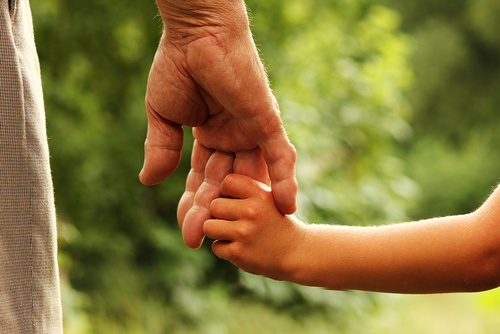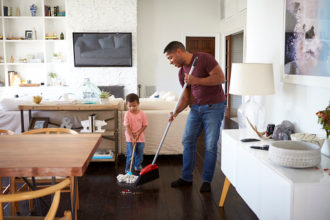This year, our children have been faced with unprecedented obstacles and stress as they’ve learned to adapt to the COVID-19 pandemic. Given these challenges, it is imperative that children develop the skills they need to maintain a hopeful mindset and continue moving forward, especially in the face of adversity. There has never been a more critical time to teach our children about hope.
Hope is a measurable, learnable and teachable skill that can have positive an impact on your child’s life. Research shows that higher hope is associated with higher grades, improved attention, creativity and problem-solving in class, improved athletic performance, and higher-quality relationships. Higher hope is also linked to resilience against anxiety and depression, less violence, and less likelihood of risky behaviors, addiction and loneliness.
Learning hope starts at home. By using the Five Keys for Hope as your guide, you can make small changes to create big impacts on your child’s short and long-term health.
Hope Key 1: Identify and Manage Your Stress Response
When you are triggered by something around you, your body has a 90-second physiological stress response, during which you stay in “fight, flight or freeze” mode. Stress Skills are skills that help you navigate those 90 seconds. By teaching your children Stress Skills, you will be teaching them how to work through their body’s stress response and then respond calmly.
Teaching Stress Skills in your home is easy. When you notice that your child is triggered, try the following:
- Take Deep Breaths. Encourage your child to breathe deeply with their eyes closed for 90 seconds before they react.
- Focus on the Five Senses. Break worry and rumination cycles by having your child focus on the present moment. Have them tell you what they notice with each of their five senses.
- Visualize. Encourage your children to take time to visualize the night before big events. Visualizing success the night before can help decrease stress during the real event.
Hope Key 2: Practice Happy Habits
The more you have a hopeful mindset, the happier and healthier you will be. When you talk about hope with your children, it is important to focus on Happy Habits that they can do to inspire a hopeful mindset.
Here are some fun Happy Habits to try at home:
- End the Night Positively. Every night, have your children list one thing they were thankful for and one act of kindness they witnessed. Ending your day focusing on positivity is a great way to stimulate a positive attitude for the upcoming day.
- Have Dance Parties. Stimulate positive feelings with dancing, singing and laughing.
- Eat Healthily. Fruits and veggies are not only good for your body; they are also good for your brain. Making sure kids get hope-helping fruits and vegetables every day can help them stay hopeful, happy and healthy.
Hope Key 3: Take Inspired Actions Using SMART Goals
The act of setting specific, measurable, achievable, relevant and time-bound (or SMART) goals and then pursuing them with inspired actions can help you maintain a hopeful mindset.
We recommend not only setting SMART goals for yourself, but also helping your children set their own SMART goals. Working on individual goals as a family can help inspire positive feelings and enthusiasm, both of which help you reach your goals.
Hope Key 4: Develop a Hope Network
Your Hope Network is the group of people around you who know you, appreciate you, see your strengths, and help you keep your hopeful attitude.
Many children have a hard time identifying their Hope Network. Spend time writing down a list of parents and family members, faculty and staff within their school, friends and medical professionals that your child can reach out to when they need help.
Hope Key 5: Overcome the Challenges to Hope
By introducing your child to the first four Keys for Hope, you can prepare them for the challenges that they will face throughout their lives. That’s why the fifth hope key is practicing those skills when difficulties arise.
Some of the most common challenges to hope that children face include rumination and worry, internalizing failure, and trying to control the uncontrollable. It is important to help your children learn to identify these challenges and then respond with Stress Skills, Happy Habits, and SMART goals in positive ways.
Learning hope is a process and there will be obstacles along the way. However, there has never been a more critical time to introduce hope to your children. For more resources for creating, maintaining, and growing hope, visit www.hopefulminds.org.
Kathryn Goetzke, MBA, is the Founder of iFred, and the creator of Hopeful Minds, a program dedicated to teaching hope to kids free, globally. She is also the author of The Biggest Little Book About Hope, founder of Hopeful Cities, and host of The Hope Matrix Podcast.





